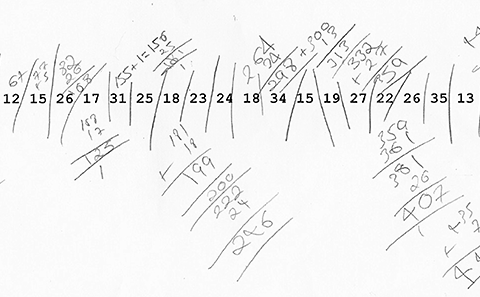Posts Tagged: PhD
Ph.D.-related posts and papers


Paper: Addition as interactive problem solving
| These dual skills of manipulating the environment and processing the environment (…) allow us to reduce very complex problems to a series of very simple ones. (…) This is real symbol processing and, we are beginning to think, the primary symbol processing that we are able to do. Indeed, on this view, the external environment becomes a key extension to our mind. |
| McClelland, Rumelhart and the PDP Research Group (1986): Vol. 2, p. 46 |
Hansjörg Neth, Stephen J. Payne
Addition as interactive problem solving
Abstract: Successful problem solving depends on a dynamic interplay of resources between agent, task, and task environment. To illuminate these interactions we studied how participants added a series of single-digit numbers presented on a computer screen. We distinguished between four different user interfaces, each implementing a different mode of interaction with the displayed addends: look only, point, mark, and move. By collecting and analysing complete interaction protocols we were able to integrate overall performance measures with fine-grained behavioural process data on the strategies engendered by the different user interfaces. We discovered reliable differences in the chosen sequences of addends, which can be understood in terms of the cost-benefit structures provided by the interactive resources of the user interfaces.
Keywords: Embodied cognition, mental arithmetic, epistemic actions, complementary strategies, immediate interactive behavior (IIB).
Reference: Neth, H., & Payne, S. J. (2001). Addition as interactive problem solving. In J. D. Moore & K. Stenning (Eds.), Proceedings of the 23rd Annual Meeting of the Cognitive Science Society (pp. 698–703). Mahwah, NJ: Lawrence Erlbaum.
Related: Thinking by doing? | Immediate interactive behavior (IIB) | Arabic vs. Roman arithmetic | Taxonomy of actions | The cognitive basis of arithmetic | Interactive coin addition | The functional task environment
Resources: Download PDF | Google Scholar